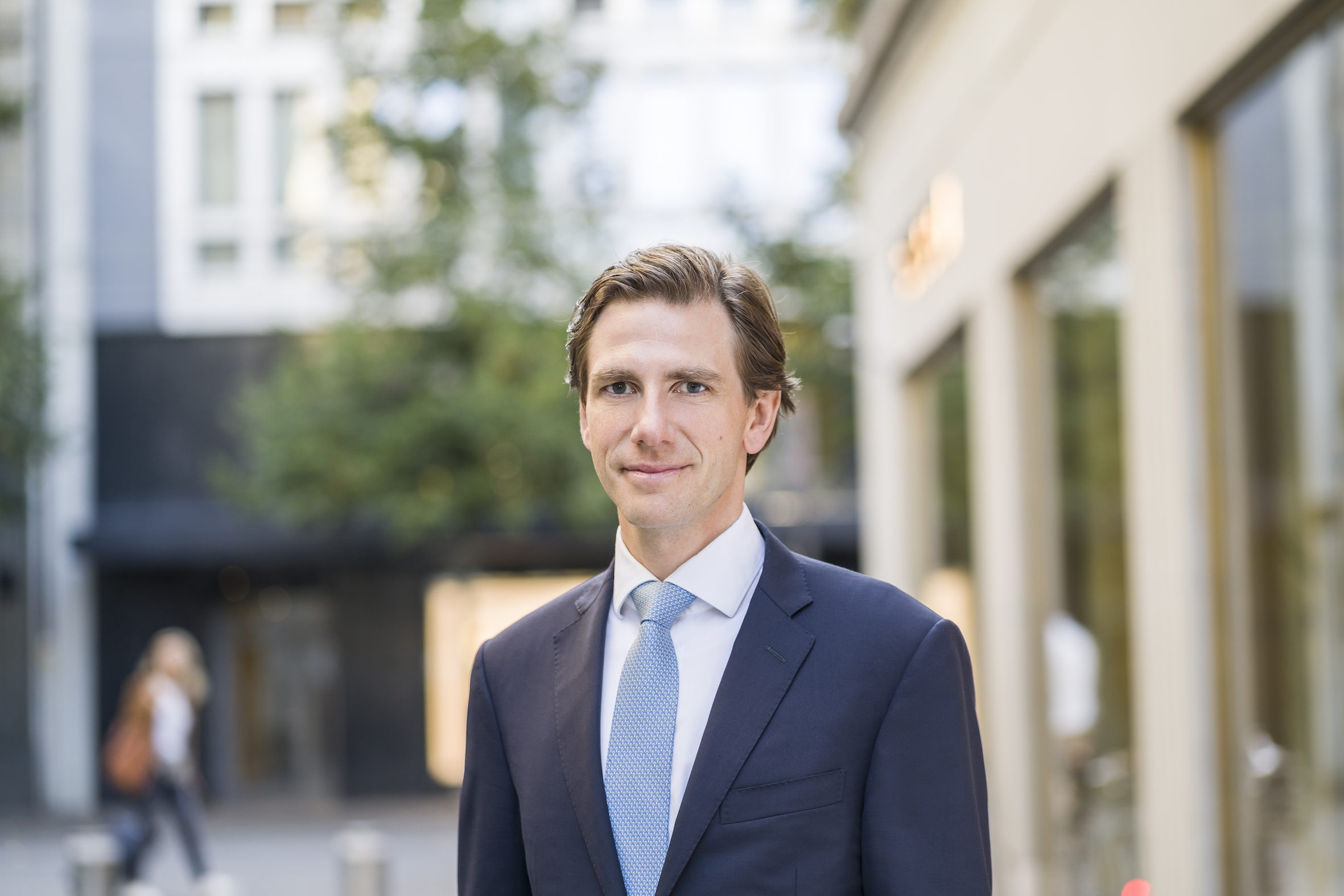In a time of geopolitical tension and market recalibration, UBS reveals how global family offices are adapting – and what Monaco’s elite can learn from their strategies.
As global markets adjust to a complex web of geopolitical tensions, shifting economic policies, and structural investment trends, family offices are increasingly seeking clarity and conviction in their decision-making. Nowhere is this more relevant than in Monaco, where long-term vision, discretion, and a global outlook have long defined the principality’s investment ethos.
In this exclusive interview, we sit down with Max Kunkel, Chief Investment Officer UHNW at UBS Global Wealth Management, to explore the insights from the latest Global Family Office Report. From rising interest in artificial intelligence and healthcare to renewed focus on gold, public equities, and real assets, he shares how the world’s most sophisticated investors are positioning themselves amid rising uncertainty – and what it all means for Monaco’s own investment community.
With Donald Trump back and rising tensions in the Middle East, what are your key observations on how these geopolitical developments are shaping market dynamics?
Max Kunkel: From a market perspective, it’s essential to focus on the key transmission mechanisms of geopolitical escalation. In the case of the Middle East, the impact isn’t so much due to the size of the Israeli or Iranian economies or their integration into global financial markets. Rather, it’s the availability and price of oil that matters most. For a geopolitical event in this region to have a more significant effect on markets, you’d likely need a sustained disruption to oil supply, particularly through the Strait of Hormuz. Around 30% of all seaborne global oil trade passes through that strait daily. While we haven’t seen such a disruption yet, and there’s currently no strong indication that Iran would move in this direction – not least because it would hurt its own exports and those of its neighbours – the risk remains.
More broadly, geopolitical and policy uncertainties highlight two key investment considerations. First, maintaining diversification across both asset classes and regions remains crucial. Second, there is a growing emphasis on quality – not just in equities, where investors favour companies with robust balance sheets and predictable long-term earnings, but also in fixed income, where high-quality bonds tend to perform well in uncertain times.
Turning to the latest UBS Global Family Office Report – what are the most striking trends you’ve observed? Are family offices adjusting their asset allocation or risk appetite given the current macroeconomic climate?
There are three major areas of focus for family offices at the moment. The first is gaining exposure to structural growth trends, which is especially relevant in a climate of uncertainty. Key sectors include artificial intelligence, electrification, and healthcare – particularly longevity. Family offices are looking to access these sectors through both public and private markets, and they’re considering regional nuances. For example, with AI, there’s a strong focus on the US and parts of Asia, whereas electrification might involve more interest in European companies that already have an edge.
The second area is enhancing yield as cash rates begin to decline. While high-quality, short- to medium-duration fixed income remains popular, there’s growing interest in private credit. Our survey shows allocations have risen from around 2% last year to about 4% now. It’s not a huge shift, but it’s meaningful.
The third focus is diversification amid a backdrop of multiple global risks. In the near term, concerns centre around trade tensions, but looking further ahead – over a five-year horizon – geopolitical escalation, debt crises, and potential recessions are key worries. To address these risks, family offices are turning to active management – with around 64% of equity investments now actively managed. There’s also increasing interest in hedge funds, which can offer better risk-adjusted returns due to lower correlations, and a notable uptick in allocations to precious metals, especially gold.
On the question of asset allocation, family offices are quite uniquely positioned. They benefit from patient capital, limited regulatory constraints, and long-term investment horizons. Most follow a kind of customised ‘60/40’ approach – 60% in traditional assets like equities, fixed income, and cash, and 40% in alternatives, such as private equity, real estate, and hedge funds. Recently, within the equity portion, we’ve seen a shift towards public equities, partly due to valuations and greater opportunities in sectors like AI. There’s also been a decline in cash allocations in favour of more productive assets. And yes, interest in precious metals like gold continues to grow.
Has anything surprised you in this year’s report, or would you say most trends are simply evolving gradually?
One of the more interesting developments is the increased appetite for public equities. Traditionally, family offices – especially those led by entrepreneurial founders – have gravitated towards private equity, particularly direct investments, because it aligns with their passion for innovation and hands-on involvement. But now, we’re seeing a more balanced approach, with growing interest in public markets.
Another notable point is the reduction in cash holdings despite uncertainty, in favour of assets with more durable yields and longer-term growth prospects. Also, there’s clearly a rising interest in active management, particularly in equities, even as many assume that passive investing is taking over.
Based on your discussions with family offices and UHNW individuals in Monaco and across Europe, what are their main investment priorities right now? Are you seeing any shifts in long-term positioning or sector preferences?
Among European family offices, including those in Monaco, we’ve actually observed an increase in private equity allocations, which contrasts slightly with the global trend. This seems to be driven by a greater interest in local opportunities. Europe, unlike the US, relies less on capital markets and more on bank financing. That means some of the most innovative companies, especially in sectors like power and resources, might not be publicly listed. Accessing them requires investment via private markets, and this is showing up in portfolios.
Another point to note is currency exposure. While some are concerned about the US dollar’s trajectory, European family offices are not generally overexposed to the US. Their average allocation to North America is around 40%, which is relatively measured. Most of this is invested in companies that are truly unique, often with no substitutes outside the US. So, there’s growing focus on managing unnecessary dollar exposure, such as in cash or fixed income, while retaining investments in exceptional US firms that can’t easily be replicated elsewhere.
As we move into the second half of the year, what macroeconomic trends and market signals are you monitoring most closely? Are there specific sectors or themes you believe could stand out?
There are a few major themes we’re closely watching. First, tariffs and fiscal policy in the US are pivotal. We currently have an effective US tariff rate of about 15%, and by year-end, it’s likely to be more defined. Tariffs on most countries may stabilise at around 10%, while China could face rates of 30% to 40%, especially in sectors like semiconductors and pharmaceuticals. However, reciprocal tariffs might face legal and political hurdles, so many could be paused. This is likely to exert mild upward pressure on inflation and may slow economic growth, though not enough to trigger further interest rate hikes or a recession.
On fiscal policy, we expect the passage of the so-called “big, beautiful bill,” which would reduce some of the uncertainty surrounding the US fiscal outlook.
Geopolitics, as mentioned earlier, remains a source of risk. That calls for a diversified investment approach and continued interest in safe haven assets like gold. We also anticipate a US economic slowdown, driven by policy uncertainty and the drag from tariffs on consumer spending. As unemployment rises, the Federal Reserve will likely be in a position to cut interest rates – possibly in late Q3 or early Q4.
In such an environment – with slower growth, elevated interest rates, and persistent geopolitical tensions – the focus should remain on companies exposed to long-term structural growth. Technology and healthcare in the US are still sectors we favour.
As for currencies, we believe the dollar will weaken further. We’re probably looking at a range of 1.15 to 1.20 for the euro-dollar exchange rate in the second half of the year. Over the longer term, growth differentials, policy divergence, and persistent uncertainty all suggest a softer dollar.
Given that Monaco has a strong luxury focus, do these macroeconomic developments have a particular impact on the luxury market?
Yes, absolutely. In luxury goods, we’re still seeing solid demand in areas like high-end jewellery and ultra-premium brands. However, in the leather goods segment – which represents a significant share of the luxury sector – it’s become increasingly difficult for companies to continue pushing through price increases. For some consumers, aspirational purchases are becoming harder to justify given how much prices have risen. That will remain a challenge.
When it comes to luxury services, the shift is more structural. People are now spending more on experiences – travel, restaurants, concerts – basically anything that creates shareable memories. It’s what we call “Instagrammable spending.” That trend seems to be growing and may well continue to outpace demand for luxury goods.
Finally, as you’ve met with clients in Monaco, have there been any surprising questions or themes that stood out in your discussions?
One question that comes up more and more, which I find quite fundamental, is how the United States plans to deal with its high levels of debt and sustained fiscal deficits. Investors want to know what this means for them. Historically, countries have had three options: default, grow out of the debt, or suppress it through financial repression. Default is unlikely in the US. Growth alone won’t be sufficient, even with technological advances. So we may see more financial repression – where institutions like banks, insurers, and pension funds are steered into buying government bonds.
That leads to an important conclusion: if investors want to preserve real wealth in this environment, they’ll need to focus on real assets. That includes real estate, gold, and equities with pricing power. It’s a more structural shift in thinking, and it’s definitely becoming a key theme in client conversations.






